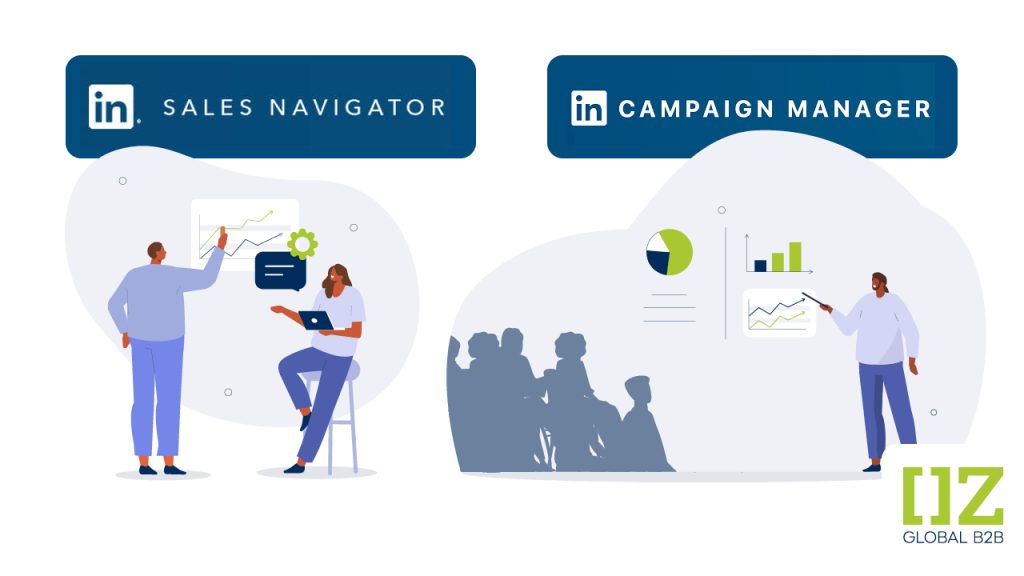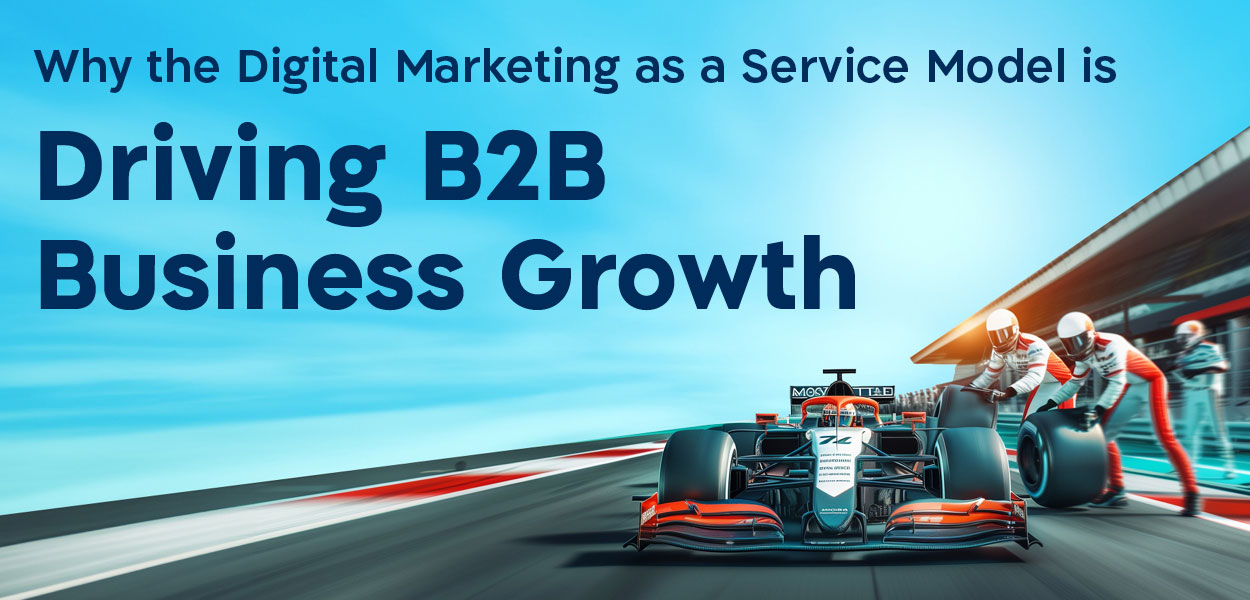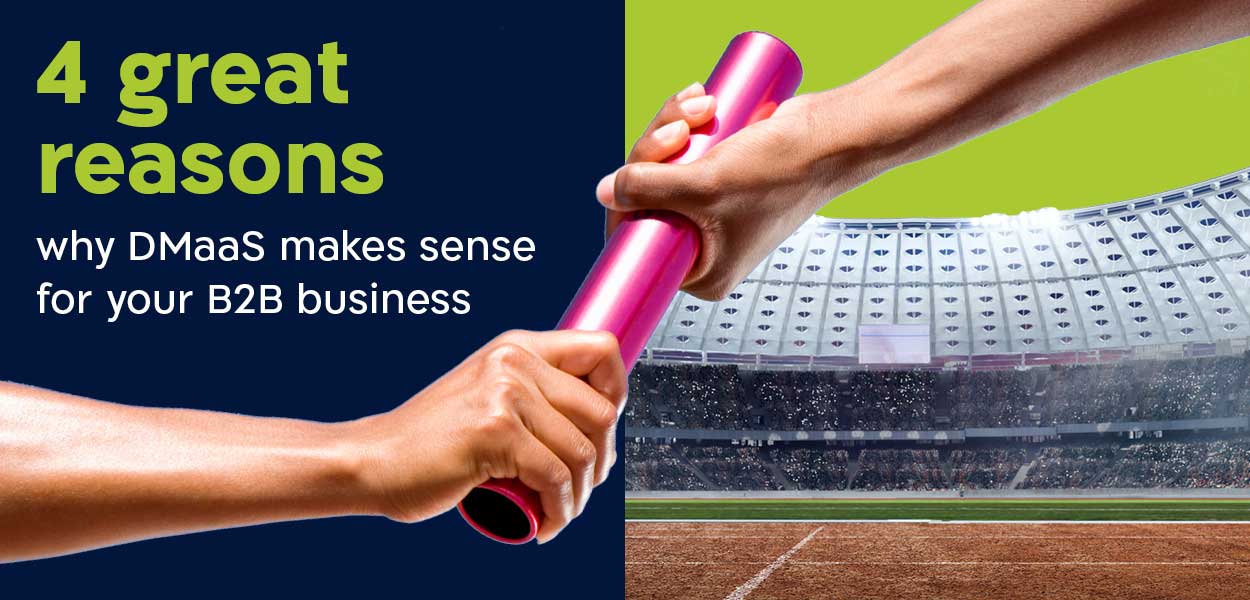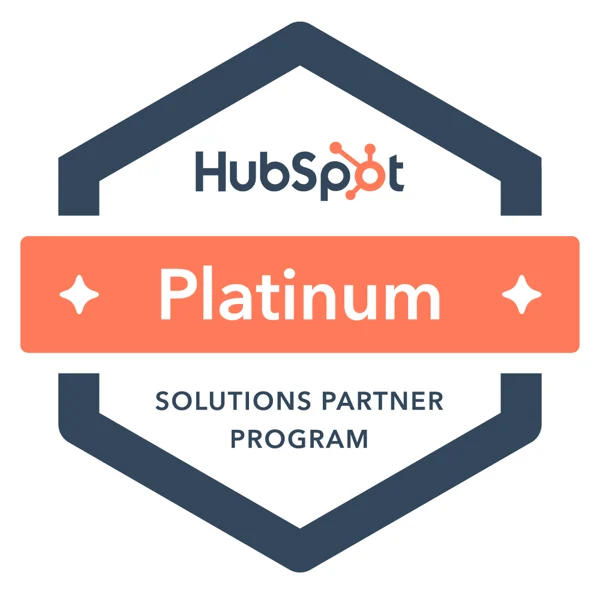The BL[OZ]
Why the Digital Marketing as a Service Model is Driving B2B Business Growth
By
Liron Ramot
, 17/06/2024
Digital marketing is essential for B2B companies to reach their target audience, generate leads, and stay competitive. Many lack the resources to handle it in-house, making outsourced digital marketing a valuable solution.
min read
Digital marketing is crucial for B2B companies to effectively reach their target audience, generate leads, make data-driven decisions, and stay competitive in the market. However, while most B2B businesses see the need for digital marketing, they don’t necessarily have the team, tools, or budget to handle it in-house.


Digital Marketing as a Service (DMaaS) is a model that works
As an on-demand model, DMaaS allows your company to access a wide range of digital marketing expertise, tools, and resources without hiring and maintaining an in-house marketing team. While digital marketing toolboxes, tactics, and strategies differ according to client needs, they frequently comprise smart content, webinars, outreach and Account-Based Marketing (ABM), Search Engine Optimization (SEO), sponsored campaigns, and marketing automation to reach target audiences and drive traffic or conversions.4 great reasons why DMaaS makes sense for your B2B business
- Access top-tier talent without the overhead costs associated with traditional hires Budget constraints and HR challenges may be standing in the way of hiring an in-house digital marketing manager. DMaaS offers a cost-effective solution, allowing your company to alleviate the burden of recruitment, training, and retention, freeing up your resources to focus on your core business operations.
- Effectively navigate the complex digital landscape Tap into the expertise of seasoned professionals who possess a comprehensive understanding of digital marketing strategies, tactics, and execution skills that can help you achieve your marketing objectives.
- Adapt to changing market conditions Your business has to constantly adapt to market needs and business growth. DMaaS has built-in flexibility, allowing your business to scale up or down, based on your changing needs and budget.
- Set goals, measure results & change the game plan as needed In the dynamic world of digital, the goalposts are constantly changing. By setting key performance indicators (KPIs) and using accessible analytics tools such as those available in HubSpot, you can easily track the success of your marketing campaigns, optimize strategies as needed, and demonstrate the value of using DMaaS services.

Follow the yellow brick road
As a global B2B marketing expert, OZ has spent years building a strong reputation. Digital trends may come and go, but dedication, commitment to success, experience, and professionalism never go out of fashion. At OZ, we believe that long-lasting partnerships are based on deep listening, understanding, and transforming your goals into measurable results. That’s why many of our clients stay with us when they move companies, and why many clients come to us by word of mouth.Your dedicated digital account manager will be your work BFF
With OZ, your account will be managed by a dedicated digital account manager backed by a multidisciplinary team with expertise in every aspect of digital marketing, and more. Your OZ manager is always backed up by a team comprising a graphic designer, strategist, and content writer. Your OZ manager becomes an integral part of your marketing team, offering full commitment and dedication to your company's goals. It's not just one person, but an entire team of digital experts working behind the scenes to drive your digital marketing success. Every member of the OZ team brings with them a high standard of professionalism and expertise gained from working with numerous B2B companies across various industries.
Boost your bottom line
DMaaS enables you to reach and engage with your target audiences effectively, measure the success of your campaigns with precision, and adapt your strategies in real time based on insights and feedback. It’s there to act as a driving force in your marketing strategy, enabling you to access the resources and expertise required to enhance your brand visibility, attract and retain customers, and drive sustainable growth.Account Based Marketing (ABM) Vs. Lead Generation
By
Guy Toledano
, 17/08/2023
Are you struggling to decide between account-based marketing (ABM) and Lead Generation for your business? In this blog, we explore the key differences between the two strategies and how they can be used together to achieve optimal results. From understanding the benefits of demand generation to utilizing ABM for "land and expand" tactics. This guide provides valuable insights for marketers looking to boost their ROI. Additionally, the blog discusses how to effectively target the two main types of LinkedIn users to generate leads and increase engagement.
min read
Account-based marketing (ABM) and lead generation are two powerful strategies for generating revenue and boosting return on investment (ROI). While both approaches have their own unique benefits, it's important to understand the key differences between them and how they can be used together to achieve optimal results.
Lead generation, the core of demand generation, is a strategy that involves generating a large number of new leads for the sales team by targeting specific markets and industries. This approach is ideal for creating awareness and interest in a product or service, and can be done through various channels such as LinkedIn Campaign Manager. In contrast, account-based marketing (ABM) is a targeted approach that focuses on reaching out to specific named accounts, rather than a broad audience. ABM is designed to engage with the right accounts and create personalized content that captures their attention and drives further engagement.
One key benefit of demand generation is that it brings leads in, at the top of the funnel and nurtures them until they become an opportunity for the sales team. However, as the market becomes saturated, the time, money, and resources needed to generate leads can eventually outweigh the results, leading to diminishing returns. This is where ABM comes in. By focusing on specific named accounts, ABM allows marketers to "land and expand" by targeting bigger fish that match the ideal account profile (IAP). This allows for a more efficient use of resources and a higher return on investment.
 While ABM and demand generation may seem like competing strategies, they can actually be used together to achieve optimal results. For example, demand generation can be used to create awareness and interest in a product or service, while ABM can be used to generate qualified leads and sign-up new customers.
This marketing tactic, can start with a broad-based demand generation campaign to create awareness, which will help to identify targeted leads or target market segments, which can then be used to inform a more targeted ABM campaign. An ABM activity can be used to reach out to specific named accounts with personalized content. These combined activities allow marketers to use both strategies to accelerate the buyer's journey and assist with selling.
It's also important to note that while ABM and demand generation are both outbound marketing strategies, inbound demand generation is also possible. By using inbound marketing tactics such as content marketing, SEO and other digital marketing strategies, you can drive leads and customers to your website and then use ABM to engage with them.
While ABM and demand generation may seem like competing strategies, they can actually be used together to achieve optimal results. For example, demand generation can be used to create awareness and interest in a product or service, while ABM can be used to generate qualified leads and sign-up new customers.
This marketing tactic, can start with a broad-based demand generation campaign to create awareness, which will help to identify targeted leads or target market segments, which can then be used to inform a more targeted ABM campaign. An ABM activity can be used to reach out to specific named accounts with personalized content. These combined activities allow marketers to use both strategies to accelerate the buyer's journey and assist with selling.
It's also important to note that while ABM and demand generation are both outbound marketing strategies, inbound demand generation is also possible. By using inbound marketing tactics such as content marketing, SEO and other digital marketing strategies, you can drive leads and customers to your website and then use ABM to engage with them.
 On LinkedIn, there are two primary types of users. The first group is known as "active users" and they exhibit a high level of engagement on the platform, such as performing searches, interacting with content, and sharing posts. These users also typically stay on top of their inbox and respond to relevant messages. These active users can be effectively targeted through an awareness campaign, followed by account-based marketing efforts.
The second main group of LinkedIn users are referred to as "basic users." These users tend to have a more limited level of activity on the platform, mostly just scrolling through their feed. They are less likely to respond to private messages. These basic users can be targeted through professional lead generation campaigns that will catch their attention while they are scrolling through their feed, with the use of an appealing message and creative content.
It is important to note that there are other types of users who fall somewhere between active and basic user, and by combining efforts of ABM with lead generation it will help in effectively reaching out to all types of users, with the right format and message.
In conclusion, account-based marketing and lead generation are both powerful strategies for generating revenue and boosting ROI. While they have their own unique benefits, it's important to understand how they can be used together to achieve optimal results. By using a targeted ABM approach in conjunction with a broad-based demand generation campaign, marketers can achieve their pipeline and revenue goals by capturing the attention of the right accounts and signing up new customers.
For more info and questions contact us.
On LinkedIn, there are two primary types of users. The first group is known as "active users" and they exhibit a high level of engagement on the platform, such as performing searches, interacting with content, and sharing posts. These users also typically stay on top of their inbox and respond to relevant messages. These active users can be effectively targeted through an awareness campaign, followed by account-based marketing efforts.
The second main group of LinkedIn users are referred to as "basic users." These users tend to have a more limited level of activity on the platform, mostly just scrolling through their feed. They are less likely to respond to private messages. These basic users can be targeted through professional lead generation campaigns that will catch their attention while they are scrolling through their feed, with the use of an appealing message and creative content.
It is important to note that there are other types of users who fall somewhere between active and basic user, and by combining efforts of ABM with lead generation it will help in effectively reaching out to all types of users, with the right format and message.
In conclusion, account-based marketing and lead generation are both powerful strategies for generating revenue and boosting ROI. While they have their own unique benefits, it's important to understand how they can be used together to achieve optimal results. By using a targeted ABM approach in conjunction with a broad-based demand generation campaign, marketers can achieve their pipeline and revenue goals by capturing the attention of the right accounts and signing up new customers.
For more info and questions contact us.
 While ABM and demand generation may seem like competing strategies, they can actually be used together to achieve optimal results. For example, demand generation can be used to create awareness and interest in a product or service, while ABM can be used to generate qualified leads and sign-up new customers.
This marketing tactic, can start with a broad-based demand generation campaign to create awareness, which will help to identify targeted leads or target market segments, which can then be used to inform a more targeted ABM campaign. An ABM activity can be used to reach out to specific named accounts with personalized content. These combined activities allow marketers to use both strategies to accelerate the buyer's journey and assist with selling.
It's also important to note that while ABM and demand generation are both outbound marketing strategies, inbound demand generation is also possible. By using inbound marketing tactics such as content marketing, SEO and other digital marketing strategies, you can drive leads and customers to your website and then use ABM to engage with them.
While ABM and demand generation may seem like competing strategies, they can actually be used together to achieve optimal results. For example, demand generation can be used to create awareness and interest in a product or service, while ABM can be used to generate qualified leads and sign-up new customers.
This marketing tactic, can start with a broad-based demand generation campaign to create awareness, which will help to identify targeted leads or target market segments, which can then be used to inform a more targeted ABM campaign. An ABM activity can be used to reach out to specific named accounts with personalized content. These combined activities allow marketers to use both strategies to accelerate the buyer's journey and assist with selling.
It's also important to note that while ABM and demand generation are both outbound marketing strategies, inbound demand generation is also possible. By using inbound marketing tactics such as content marketing, SEO and other digital marketing strategies, you can drive leads and customers to your website and then use ABM to engage with them.
 On LinkedIn, there are two primary types of users. The first group is known as "active users" and they exhibit a high level of engagement on the platform, such as performing searches, interacting with content, and sharing posts. These users also typically stay on top of their inbox and respond to relevant messages. These active users can be effectively targeted through an awareness campaign, followed by account-based marketing efforts.
The second main group of LinkedIn users are referred to as "basic users." These users tend to have a more limited level of activity on the platform, mostly just scrolling through their feed. They are less likely to respond to private messages. These basic users can be targeted through professional lead generation campaigns that will catch their attention while they are scrolling through their feed, with the use of an appealing message and creative content.
It is important to note that there are other types of users who fall somewhere between active and basic user, and by combining efforts of ABM with lead generation it will help in effectively reaching out to all types of users, with the right format and message.
In conclusion, account-based marketing and lead generation are both powerful strategies for generating revenue and boosting ROI. While they have their own unique benefits, it's important to understand how they can be used together to achieve optimal results. By using a targeted ABM approach in conjunction with a broad-based demand generation campaign, marketers can achieve their pipeline and revenue goals by capturing the attention of the right accounts and signing up new customers.
For more info and questions contact us.
On LinkedIn, there are two primary types of users. The first group is known as "active users" and they exhibit a high level of engagement on the platform, such as performing searches, interacting with content, and sharing posts. These users also typically stay on top of their inbox and respond to relevant messages. These active users can be effectively targeted through an awareness campaign, followed by account-based marketing efforts.
The second main group of LinkedIn users are referred to as "basic users." These users tend to have a more limited level of activity on the platform, mostly just scrolling through their feed. They are less likely to respond to private messages. These basic users can be targeted through professional lead generation campaigns that will catch their attention while they are scrolling through their feed, with the use of an appealing message and creative content.
It is important to note that there are other types of users who fall somewhere between active and basic user, and by combining efforts of ABM with lead generation it will help in effectively reaching out to all types of users, with the right format and message.
In conclusion, account-based marketing and lead generation are both powerful strategies for generating revenue and boosting ROI. While they have their own unique benefits, it's important to understand how they can be used together to achieve optimal results. By using a targeted ABM approach in conjunction with a broad-based demand generation campaign, marketers can achieve their pipeline and revenue goals by capturing the attention of the right accounts and signing up new customers.
For more info and questions contact us.













